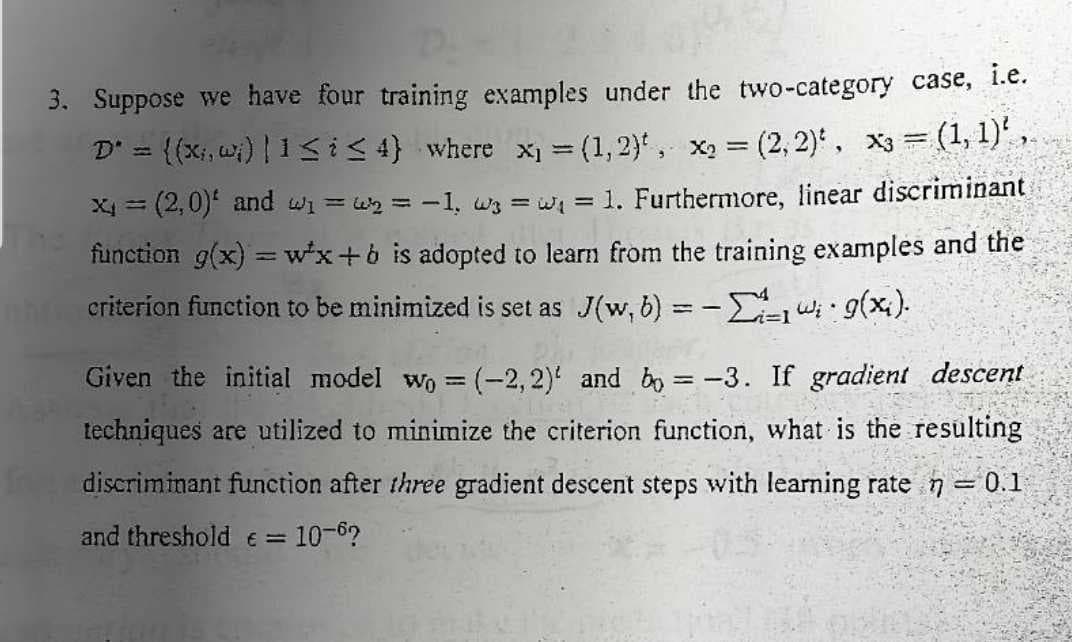3. Suppose we have four training examples under the two-category case, i.e. D* = {(x₁,w₁) |1 ≤ i ≤ 4} where x₁ = (1, 2), x₂ = (2, 2), x3 = (1, 1)¹, x₁ = (2,0) and w₁ = 62 = -1, W3 = w₁ = 1. Furthermore, linear discriminant function g(x) = wx+b is adopted to learn from the training examples and the -5²,Wi. · g(x₁). criterion function to be minimized is set as (w. b) 11
3. Suppose we have four training examples under the two-category case, i.e. D* = {(x₁,w₁) |1 ≤ i ≤ 4} where x₁ = (1, 2), x₂ = (2, 2), x3 = (1, 1)¹, x₁ = (2,0) and w₁ = 62 = -1, W3 = w₁ = 1. Furthermore, linear discriminant function g(x) = wx+b is adopted to learn from the training examples and the -5²,Wi. · g(x₁). criterion function to be minimized is set as (w. b) 11
Operations Research : Applications and Algorithms
4th Edition
ISBN:9780534380588
Author:Wayne L. Winston
Publisher:Wayne L. Winston
Chapter24: Forecasting Models
Section: Chapter Questions
Problem 10RP
Related questions
Question
100%
The question is detailled and explained in the picture attached

Transcribed Image Text:3. Suppose we have four training examples under the two-category case, i.e.
D* = {(x;, wi) | 1 ≤ i ≤ 4} where x₁ = (1, 2), x₂=(2, 2)*, x3 = (1, 1)²,
x₁ = (2,0) and w₁ = W₂ = -1₁ W3 = ₁ = 1. Furthermore, linear discriminant
function g(x) = w²x+b is adopted to learn from the training examples and the
criterion function to be minimized is set as J(w, b) = -₁₁ · g(xi).
Given the initial model wo = (-2,2)' and bo = -3. If gradient descent
techniques are utilized to minimize the criterion function, what is the resulting
discriminant function after three gradient descent steps with learning rate n = 0.1
and threshold € = = 10-67
Expert Solution
This question has been solved!
Explore an expertly crafted, step-by-step solution for a thorough understanding of key concepts.
Step by step
Solved in 3 steps with 43 images

Knowledge Booster
Learn more about
Need a deep-dive on the concept behind this application? Look no further. Learn more about this topic, computer-science and related others by exploring similar questions and additional content below.Recommended textbooks for you

Operations Research : Applications and Algorithms
Computer Science
ISBN:
9780534380588
Author:
Wayne L. Winston
Publisher:
Brooks Cole

Operations Research : Applications and Algorithms
Computer Science
ISBN:
9780534380588
Author:
Wayne L. Winston
Publisher:
Brooks Cole